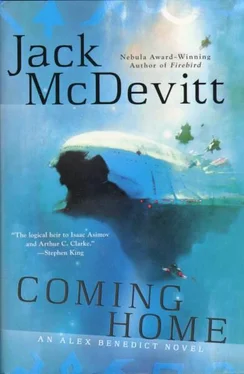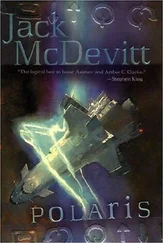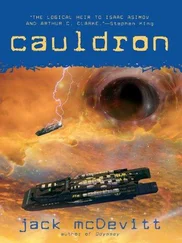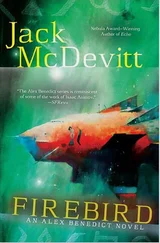“Actually, it was in pretty decent shape.”
“Really? That seems strange.”
“I know. I wondered about that, too. Wherever he found it, it had been in a safe place.”
* * *
There was nothing more to be gained from Fremont, so we rode over to Baylee’s former house. It was a modest place, a cottage with a view of a river, and, in the distance, a bridge. Several trees rose above the lawn. Two women were seated on the porch, one in a canvas chair, the other in a rocker.
Alex told the cab to stop. We got out and stood at the end of a walkway. The women looked in our direction, and we waved. One raised her hand in a halfhearted return of the gesture.
We went about halfway to the porch and stopped. “Hello,” Alex said amiably. “We’re doing some research on Garnett Baylee. I wonder if we could talk with you for a minute?” They glanced at each other. Neither appeared to have any clue who Baylee was. “I believe he owned this place at one time. About eighteen years ago.”
The woman in the rocker frowned as we went closer. “Who are you?” she asked.
“My name’s Alex Benedict.” He smiled at me. “This is Chase Kolpath.”
“Hello,” I said, putting as much good cheer into it as I could manage.
The other woman got to her feet. “Is there a problem, Mr. Benedict?”
“No,” he said. “No problem. But Garnett Baylee was a famous archeologist. He used to live here.”
“I never heard of him. I’m not even sure what an archeologist does.” She laughed as she saw Alex’s reaction. “Just kidding,” she added.
“We’re writing a paper on Baylee, and I wanted to get a look at where he used to live. It’s quite nice.”
“Thank you. We like it.”
Alex said something about the beautiful view and what an attractive neighborhood it was. “Did you buy the property from him?”
“I really don’t recall what the owner’s name was,” said the woman in the rocker.
“Are you the current owner?”
“Yes, I am.”
“May I ask how long you’ve been here?”
She had to think about it. “About seventeen, eighteen years. So it probably was him.”
“Mr. Baylee died a few years ago, on Rimway. His family found a valuable artifact in one of the closets of his home there. It was a mechanism used by the early starships.”
“Oh.”
Suddenly, both women looked interested. The one in the canvas chair asked whether that translated into a lot of money?
“Thousands,” said Alex. “The reason we stopped by is that we wanted to let you know. Have you by any chance found anything he might have left?”
“No,” said the owner. “I don’t recall anything. Other than a couple of rakes out in the shed.”
“Okay,” said Alex. “If you do find something, would you let me know? I’m an antiquarian. I can give you a good idea what it would be worth.”
“Sure,” she said. She put her thumb under a link-bracelet, and lifted it slightly.
Alex moved his hand in front of his own and sent her his code. “Good luck,” he said. “I hope you come up with something.”
“I’ll let you know if we do.”
They looked relieved to see us leave. And Alex was obviously unhappy. “What’s wrong?”
“I’d give a lot to be able to look through the property. But I don’t think they’d be very receptive.”
“That’s probably an accurate call. We could always arrange to have them win a dinner somewhere, then wait for them to leave the house.”
Alex likes to say I have a great sense of humor. On that occasion, he said nothing.
“In case you’re thinking about buying your way in,” I said, “they’d have no reason to lie. And I know it happened once, but it’s not likely there’d be anything on a closet shelf they hadn’t noticed.”
We love artifacts because they provide a connection with the past and permit us, for a moment, to share in ancient glories. To own a pen that once belonged to Winston Churchill is to bring the man himself into our living room. A helmet worn by Andrey Sidorov allows us to climb out of the hatch with him onto Europan soil and to take that first up-close glance at Saturn. To touch the cup of Christ, could we find it, would put us in touch with Jesus himself.
—Kirby Edward,
Traveling in Time, 1407
Moonbase had been in place almost a thousand years when they closed it down. It had become irrelevant to interplanetary travel as anything other than a monument. You could probably argue it had always been effectively irrelevant. But it must have been a glorious accomplishment when they first raised the flags. One of the old videos is still available, the clip that people must have watched around the world, the speeches, the ribbon-cutting ceremony, the raised glasses, the confetti drifting down ever so slowly.
The big celebrations had all been held there, marking the early flights to Mars, Europa, and Venus; the first manned vehicle to glide through the rings of Saturn; the first expedition to reach Mercury and send back images of its battered landscape and swollen sun. Visits to the outer planets. And, employing the long-awaited FTL technology, the first manned interstellar voyage. They’d gone to Alpha Centauri. It had required fourteen weeks, round-trip. They didn’t have the Corbett transmitter then, so they had to wait for the mission to return before anyone knew whether it had succeeded. Unfortunately, there was no video record of that one.
There was another celebration four years later when a radio transmission, sent by the Centaurus crew from Alpha Centauri, was received by that same crew in Huntsville.
Moonbase apparently lit up on every possible occasion. And at home, streets from Moscow to Yokohama to Cairo filled with people and music.
The base even survived the global economic collapse during the twenty-fifth century, and the brief ascension of dictators throughout the world. The United States suffered under four of them before launching the revolution that hanged Marko the Magnificent on July 11, 2517. They launched fireworks at Moonbase that evening, as the news became public. And someone named Cass Mullen is quoted as having said that as long as there’s a U.S.A., the lights at Moonbase would never go off.
Unfortunately, that turned out to be true.
Another global economic cataclysm hit early in the thirty-second century. Moonbase was by then a relatively trivial expense, but it was one the various supporting governments decided they couldn’t afford. All but Russia, the UK, and the United States withdrew their support. As conditions at home deteriorated, and terrorist attacks struck the station, all six of the original lunar descent modules were brought back. And many of the artifacts. These tended to be personal items: the pressure suit worn by Neil Armstrong on that first landing, a notebook kept by Roger Chafee, a reproduction of the bridge of the Centaurus , the original mission plates for the first eight interstellar flights, arm patches from the Apollo missions, and an array of other gear belonging to individual crew members. There were also framed photos of ships and astronauts and comets and the Martian base, whose primary value lay in the fact that they had once decorated the walls of the original Moonbase.
Moonbase survived another forty years, until the three supporting nations dissolved.
It reminded me again how lucky we are to be living in this happy time. And I guess ultimately we owe it to the people who hung in throughout all the turbulence. Who kept the lights on at Moonbase until they went out on the ground.
* * *
That evening, Alex called Luciana Moretti and introduced us. “We’re trying to figure out something about Garnett Baylee’s work,” he said, “and we’re hoping you might be able to help.”
Читать дальше












